8+ Sample Public Relations Strategic Plan
-
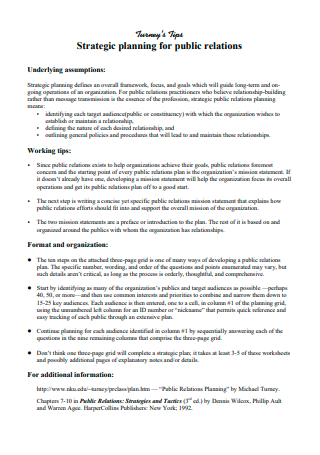
Public Relations Strategic Plan
download now -
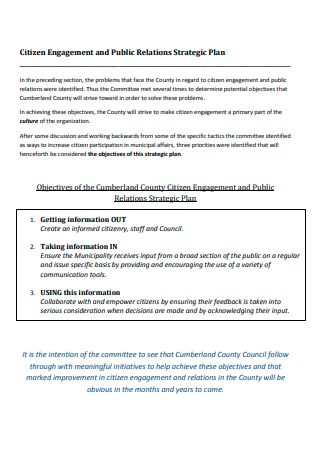
Citizen Engagement and Public Relations Strategic Plan
download now -
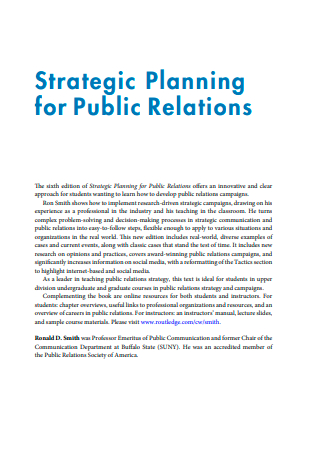
Basic Public Relations Strategic Planning
download now -
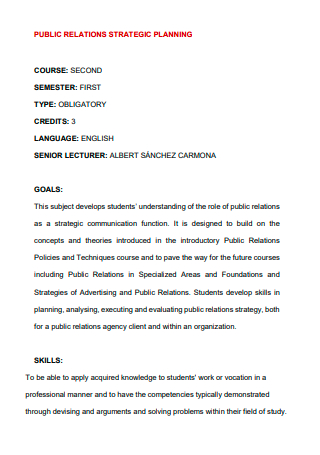
Public Relations Strategic Planning Example
download now -
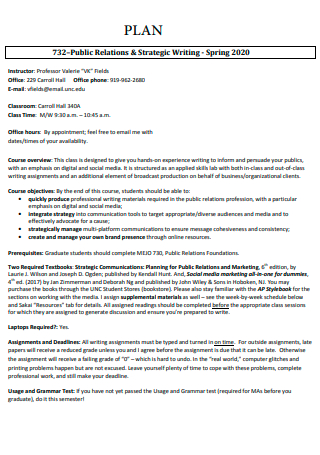
Public Relations Strategic Plan in PDF
download now -
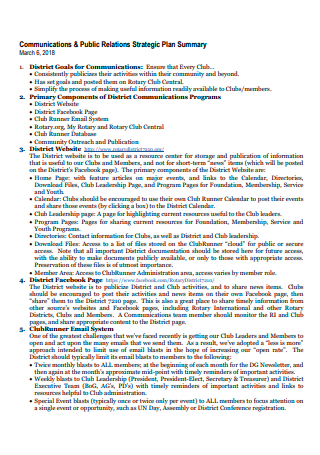
Communications and Public Relations Strategic Plan
download now -

Simple Public Relations Strategic Plan
download now -
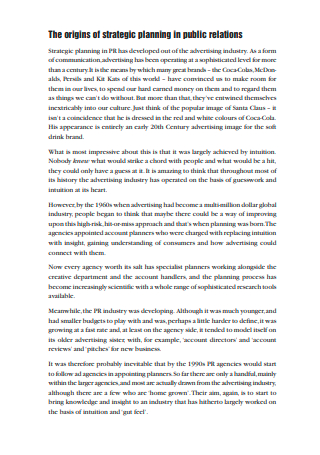
Public Relations Strategic Plan Format
download now -
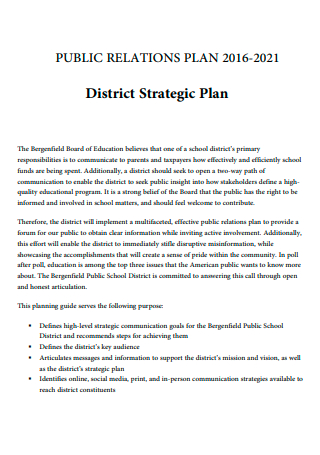
Public Relations District Strategic Plan
download now
FREE Public Relations Strategic Plan s to Download
8+ Sample Public Relations Strategic Plan
What IS a Public Relations Strategic Plan?
The Upside of Having Good Public Relations
Creating the Public Relations Strategic Plan
FAQs
What are some of the barriers to public relations?
What are some of the tools utilized by public relations?
What are some of the ways to effectively do crisis management?
What IS a Public Relations Strategic Plan?
Public relations is a strategic art of communicating that benefits both the company, or the organization, and the public, or the target audience. It manages how an organization’s communication will be disseminated, whether internally or externally, and how it will affect the target audience’s perception. The public relations communication process usually comes in the form of press releases, media briefs, advocacies, campaigns, or event promotion. Strategic planning is a documented process that lays out a company’s or an organization’s goals and the action plans to be taken to accomplish those goals. Hence, a public relations strategic plan is the process and execution of delivering out the organization’s message, positioning themselves successfully to the public or the target audience. Public relations can be a make or break for an organization’s success, therefore, careful and deliberate planning and preparation should be made before any campaign plan, event, or communique launch.
The Upside of Having Good Public Relations
More than just developing an organization’s image to make it appealing and favorable to the public, public relations can be a masterful tool that can help propel the organization to the top of its success, or it can topple it down in one single moment if not handled properly. Nevertheless, having a good public relations office or department is very beneficial and an administrative strategy that every company or organization should have. The public relations office is the face, the frontline of the organization, representing it in any kind of occasion or circumstance. Below are some of the major benefits to gain from having good public relations.
Creating the Public Relations Strategic Plan
A public relations strategic plan is a documented process that guides the public relations team on how to strategically position the brand or the organization in the market or an event. Once a goal has been established, the team then goes into action by creating processes that deal mostly with the effective way of communicating to the target audience. There is no hard and fast rule when it comes to formulating or formatting a public relations strategic plan. Just like all strategic planning, a public relations strategic plan needs to incorporate some of the following essential elements for it to be effective and successful.
-
1. Executive Summary
The executive summary of a strategic plan provides a brief background about the organization or the brand represented. The executive summary also provides a synopsis of the problem or the need for a public relations strategy. Oftentimes, executive summaries contain the mission and vision statement. The mission statement describes the purpose of the strategic planning. It contains the purpose, the culture, the values, and the goals of the organization. The vision statement provides a depiction of what the organization hopes to achieve in a given time. It helps provide a visualization of where, in this case, the public relations strategic planning hopes to lead the organization.
-
2. Market Analysis
Creating a market analysis for a public relations strategic plan is all about knowing your target audience. Classifying them according to demographics would be helpful, such as grouping them by age, gender, lifestyle, income, location, political affiliation, et cetera. Market analysis is also about being aware of the competition. Doing a SWOT analysis is also useful. SWOT means the Strength of the brand or organization, what makes it good and stand out, or what is its features that the target audience or market can greatly benefit from; Weakness, or factors that needs improvement, or factors that prevent the organization or the brand from being its full potential such as lack of resources, funding, manpower, training, and so on; Opportunities are those factors that can be taken advantage of to fully maximize the image of the brand or the organization, such as using online digital platforms or social media or social networking channels to send out messages faster, et cetera; Threats are those that could potentially harm or put at risk the brand’s or organization’s function, such as increased competition in the area, increased rates in advertising, bad weather, and so on. For public relations, being aware of your target audience is crucial since the communication should be drafted appropriately in a way that appeals to the audience.
-
3. Strategies and Tactics
Public relations strategies and tactics are the action steps taken to achieve the organization’s or brand’s goals when it comes to building the organization’s image or brand awareness. Oftentimes, the public relations group works hand in hand with the marketing team to ensure the propriety of the message to be communicated. Some of the tactics are media brief or press news releases, speeches and announcements, promos, community notices, media junket or participation, events and launches, et cetera. Common duties of the public relations group involved preparing and launching for events and campaigns, sponsorships and partnerships development, preparing for speaking engagements, developing and sustaining employer-employee relations through working with the human resources, and so on. Public relations is also useful when it comes to political and other advocacy campaigns, as well as handling crisis management. They’re at the forefront of providing news and updates regarding any ongoing crisis, and they’re the ones that do the planning on how to maintain a good public image during a crisis. The best way to prepare communications is to do a SMART goals method. SMART means that the communication made should be Specific, Measurable, Achievable, Relevant, and Time-bound.
-
4. Reviewing and Revising
This stage of the strategic planning should allow you to revisit and review the planning and activities implemented, and to make revisions as necessary. Tracking and monitoring the progress of your public relations activities is one way of ensuring that the goals of the organization or the brand were achieved. One way of doing this is by surveying your target audience’s reaction. Were they able to understand the message that you are trying to communicate? Were they satisfied? Do they have any questions or concerns that were left unanswered? What were their reactions upon receiving the news or communication? Your target audiences’ feedback should inform you if there is a need to make some revisions to the strategies or tactics, or if they were a success and can be carried on for a longer duration.
FAQs
What are some of the barriers to public relations?
Having your target audience understand clearly the message you’re trying to convey is a measurement of your public relations strategies. But, of course, there will always be barriers that would prevent you from communicating effectively, and knowing these barriers would help you in preparing for any kind of adverse events. Some of the external major barriers to communication include language and cultural barriers, location and time zone, existing people’s beliefs (cultural and political beliefs), people’s current emotional state (if they’re currently going through something emotional or not, and/or distraction coming from competition. Examples of internal barriers are poor research and training, lack of manpower to implement the activities, budget constraints, client’s standards, and expectations, and/or lack of tools, resources, or equipment to be utilized for the activities.
What are some of the tools utilized by public relations?
Some of the tools used for public relations campaigns are press kits, which contains written materials that briefed the public about the organization or the brand; newsletters, a publication piece created specifically for a target audience; promos; audio, video, social media news releases; speech messages; feature written articles and photographs; displays or exhibitions; public service announcements; radio or TV programs; billboard or community announcements; infomercials and advertorials; brochures and catalogs; documentaries, and many more.
What are some of the ways to effectively do crisis management?
Having a crisis can be a bit disconcerting, especially since it is most likely to affect the organization’s operation. That’s where having an established contingency plan comes in. But if there are no contingency plans, here are some tips on how to handle a crisis: 1) Don’t panic. Analyze and evaluate the problem calmly. Answer the questions what, where, when, who, why, and how. Think about what the potential impact will be on the brand or the organization; 2) Work fast and swiftly to minimize the damage. The sooner you act, the better chances you’ll be able to control or prevent potential damages; 3) Identify and address your first-line of responders, which are usually your customer service representatives. Have them well-equipped and trained when answering questions and concerns. Provide them with appropriate spiels and knowledge so that they could confidently handle customers’ queries; 4) Cooperate with the authorities, such as the police department or any government units handling investigations; and 5) be honest and have an open line of communication. You’ll find that your customers or the public will appreciate your sincerity and authenticity, and would even stay on as loyal customers.
Dove’s real beauty campaign taught us the importance of a carefully prepared public relations strategic plan. A successful public relations strategic plan is more than just the success of brand awareness; it’s all about the effectiveness of the communication process that was put in place. If you’re able to get your message across and have people join in your campaign and advocacy, then yes, your strategic planning was successful.
Want to start working on that successful campaign or advocacy? Check out and download our public relations strategic plan templates right now. They’re easy to fill out and easy to follow through. Start taking those strategic planning steps with our templates, and see how you’ll make your organization’s or your brand’s image flourish and thrive!
